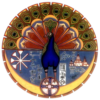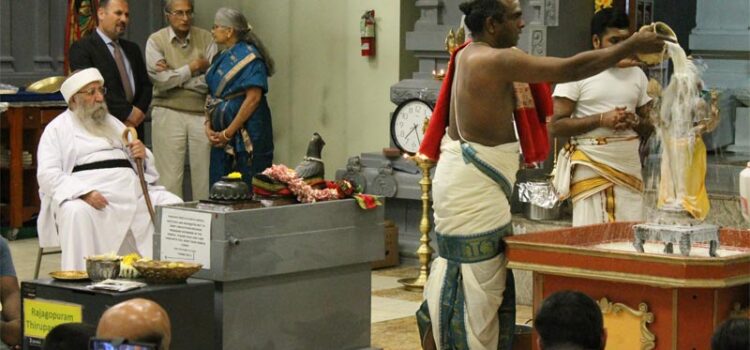

Yezidi spiritual leader Baba Sheikh observes Skanda Sasti soora samhāram at Washington DC Murugan Temple
(Washington DC, 29 October 2014) A delegation of top Yezidi spiritual and political leaders visited Washington DC October 24-31, 2014 seeking support for thousands of Yezidis and sacred sites in northern Iraq that are currently surrounded by ISIS fighters, who aim to ‘cleanse the Islamic State’ of any trace of the ‘pagan’ ancient religious minority who worship Melek Ta’us, the ‘Peacock Angel’.
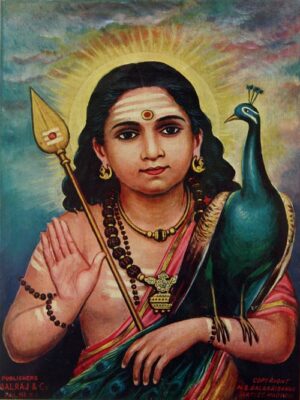
In an act deep in symbolism, the Baba Sheikh Khurto Hajji Ismail, spiritual leader of the Yezidis, visited the Washington temple of the pan-Indian war god Skanda-Murugan on October 29 to witness Soora Samhāram, the ritual conclusion of Skanda Sasti, ‘Skanda’s Six-Day War’ against demonic forces threatening the earth. It was the first time ever that the Yezidi spiritual leadership visited a temple of the peacock-mounted war god of India, whom Yezidis identify with Melek Ta’us, the ‘Peacock Angel’ whom they consider to be God’s regent on earth.
In the Yezidi faith, Melek Ta’us is regarded as the foremost among archangels and an emanation of God Himself. Yezidi religion is centered upon Melek Ta’us, who is depicted in the form of a peacock. Peacocks, however, are not native to the lands where Melek Ta’us is worshipped, but to the Indian subcontinent.
Yezidis once lived in India thousands of years ago according to their own oral tradition. Yezidis, moreover, still preserve a caste system and believe in reincarnation, which is a core tenet of Hinduism.
“The Yezidis are a very special religious community because they’re one of the only remaining religions in the Middle East with non-Abrahamic origins,” says Matthew Barber, a scholar at the University of Chicago’s Department of Near Eastern Languages and Civilizations.
According to the Yezidi calendar, its year one would have been in 4,750 BC in the Gregorian calendar. Scholars of religion concede that the Yezidi faith has absorbed and preserved many elements from ancient faiths including Hinduism, Mithraism, and Zoroastrianism, as well as the influence of Sufis or Islamic mystics—all targets of hardline ISIS fundamentalism.
“The Yezidi religion has absorbed elements from many religious traditions in the Near East, but within their religious framework are preserved some very ancient beliefs that no longer survive in any other religion. The reason that ISIS attacks the Yezidi community in this way is because they view them as pagan and polytheistic because they’re outside of the Abrahamic religions that have a written scripture.”
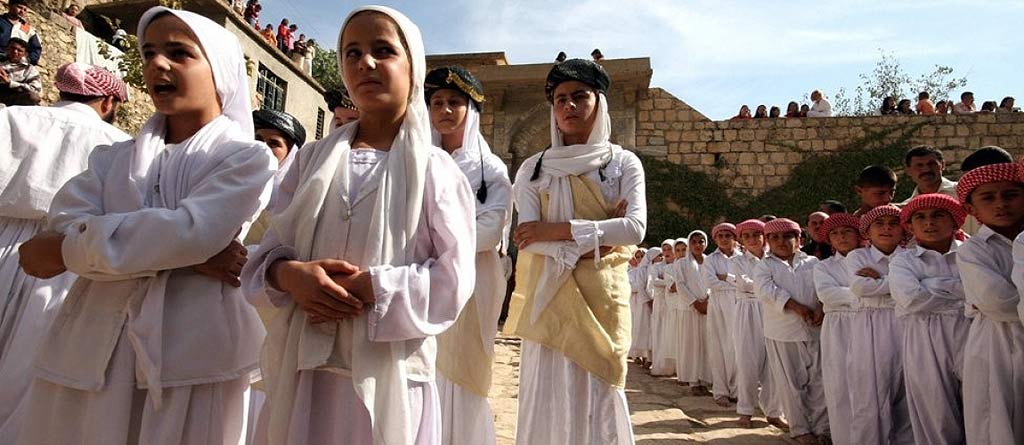
The Baba Sheikh and his entourage evinced a keen interest in the Hindu war god’s associations with the peacock. They were astonished to see tall brass oil lamps crowned with a peacock, virtually identical to the sanjaks or brass peacock lamps that play a central role in Yezidi ritual traditions.
The god Skanda Kumara was among North India’s most popular deities during the classical age in the first millennium of the Common Era. He remains extremely popular in South India, Sri Lanka, Malaysia and worldwide among the Tamil Hindu diaspora where he is known as Murugan, the ‘tender youth’ associated with poetry, love, and war.
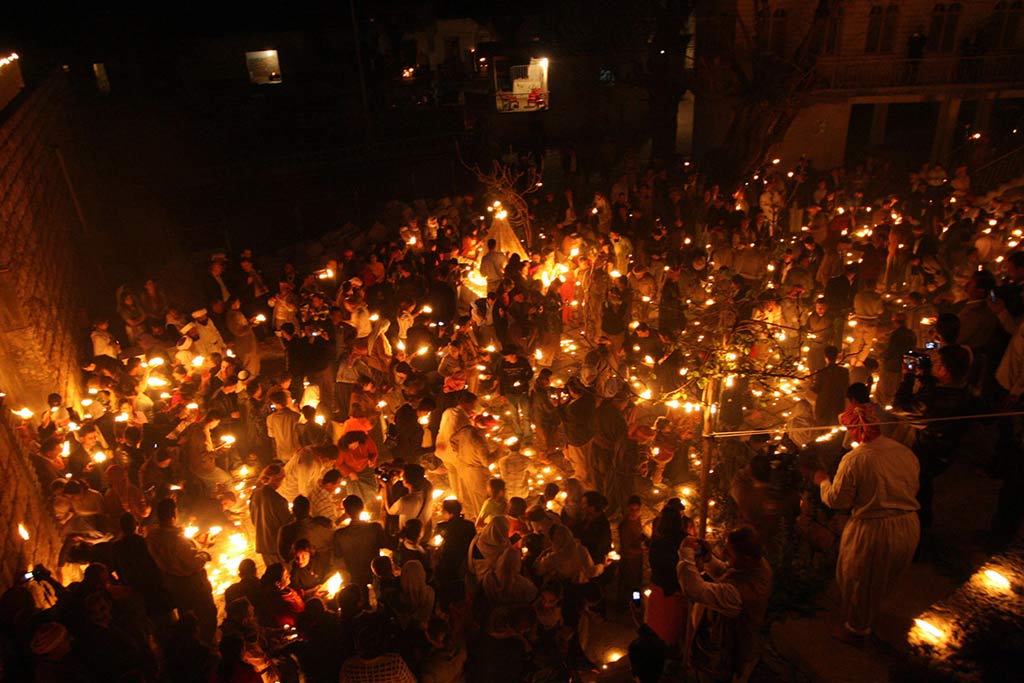
Click on the above image or here to see Yezidi activist Nallein Satana Al-Jilwah Sowilo’s original article “The Peacock King of the Vedic Yezidi People“.
The Baba Sheikh blessed Hindus who were observing the Skanda Sasti Soora Samhāram at the Washington temple, and observed that the startling confluence of Yezidi and Hindu belief and worship was also happening on a Wednesday, which is the Sabbath day of the Yezidis.
The Baba Sheikh urged listeners to strive for peace worldwide and not to descend into bigotry and intolerance that are the hallmarks of religious fundamentalism. Hindus and Yezidis alike marveled at the uncanny convergence of two ancient faiths on Skanda Sasti, and all prayed that their Lord of the Peacock would answer the fervent prayers of Yezidis in Iraq and worldwide.
Patrick David Harrigan is an American indologist specializing since 1972 in the Sri Lankan shrine Kataragama, regarded as sacred by the island’s Hindu, Buddhist, Muslim, and indigenous communities.
